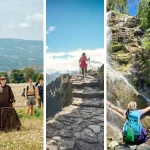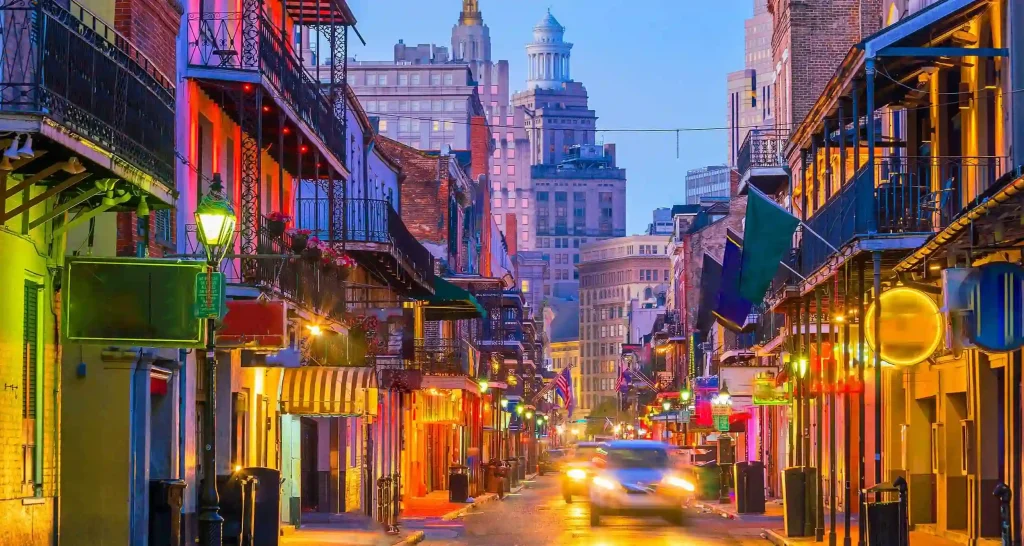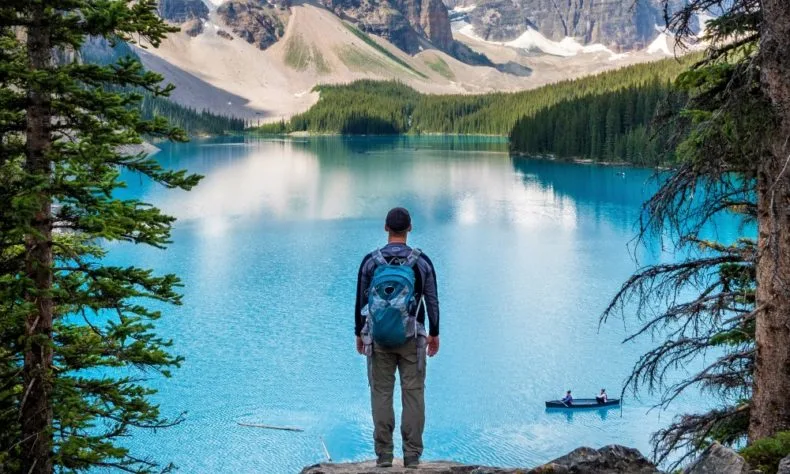A Comprehensive Guide To What To Wear in Marrakech
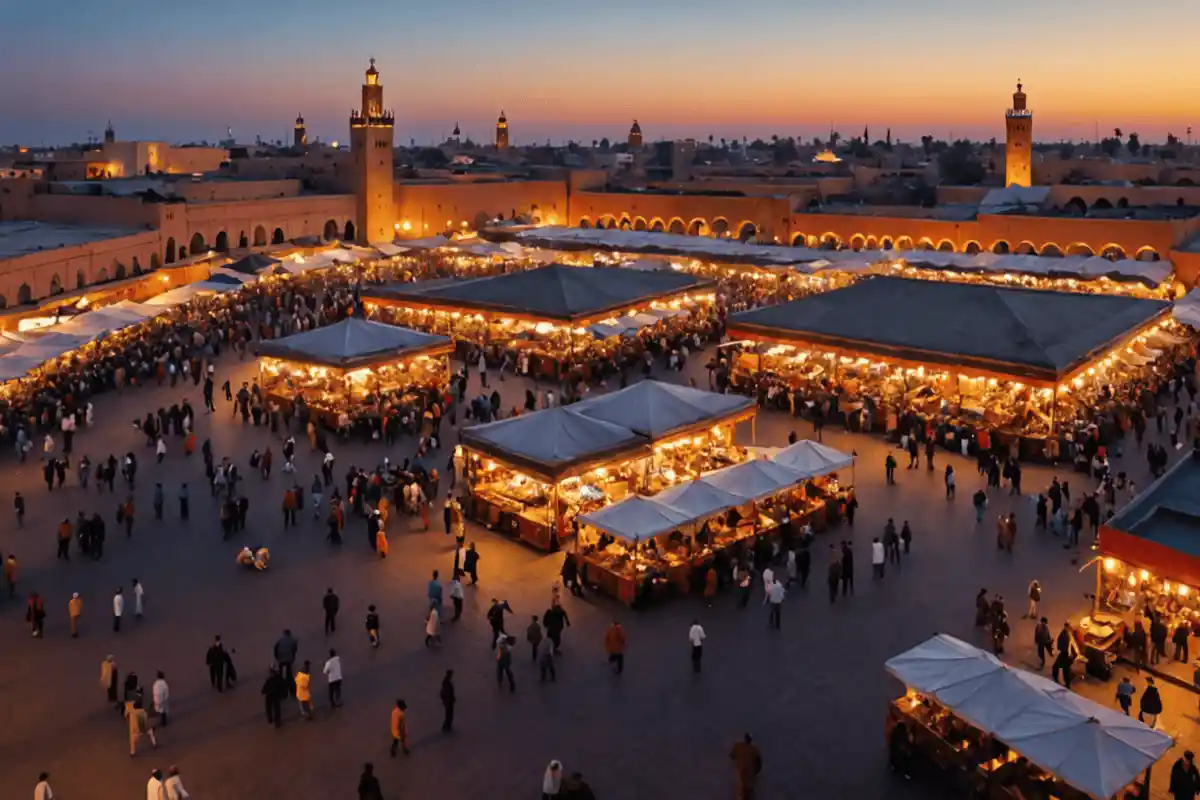
Marrakech is one of North Africa’s most fascinating cities. Known as the Red City for its terracotta walls, it combines ancient culture, desert climate, and busy street life. Visitors quickly notice the intense heat, dry air, and modest local dress code. Choosing What To Wear in Marrakech affects not only your comfort but also how locals respond to you.
This guide explains exactly what to wear in Marrakech, what to pack, what to avoid, and how to stay cool and respectful in every season. It draws on travel expertise, climate data, and advice from travelers who have experienced Marrakech firsthand.
Climate And Comfort: Understanding Marrakech Weather
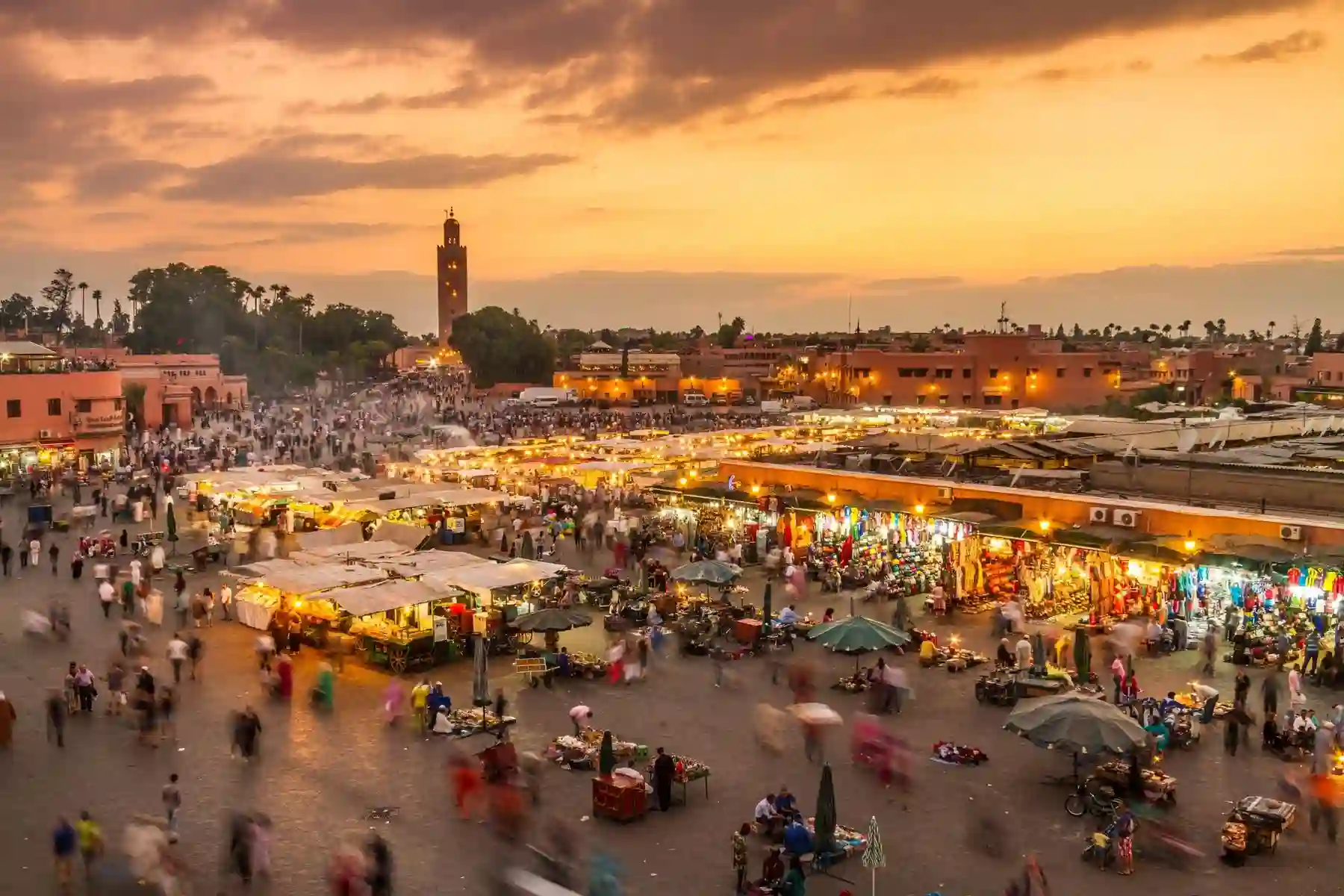
Marrakech has a semi-arid climate with long, hot summers and mild winters. From May to September, daytime temperatures often exceed 38–40 °C (100–104 °F).
Even in spring and autumn, afternoons can stay above 30 °C (86 °F). In winter (December to February), daytime averages hover between 18–22 °C (64–72 °F), but mornings can dip as low as 8 °C (46 °F).
Because the air is dry, heat builds quickly during the day but drops fast after sunset. Lightweight, breathable clothing is essential in all seasons, and layering is key at night. Fabrics such as cotton and linen let your skin breathe, absorb sweat, and keep you comfortable while exploring the medina.
Cultural Etiquette: Dress Modestly, Stay Comfortable
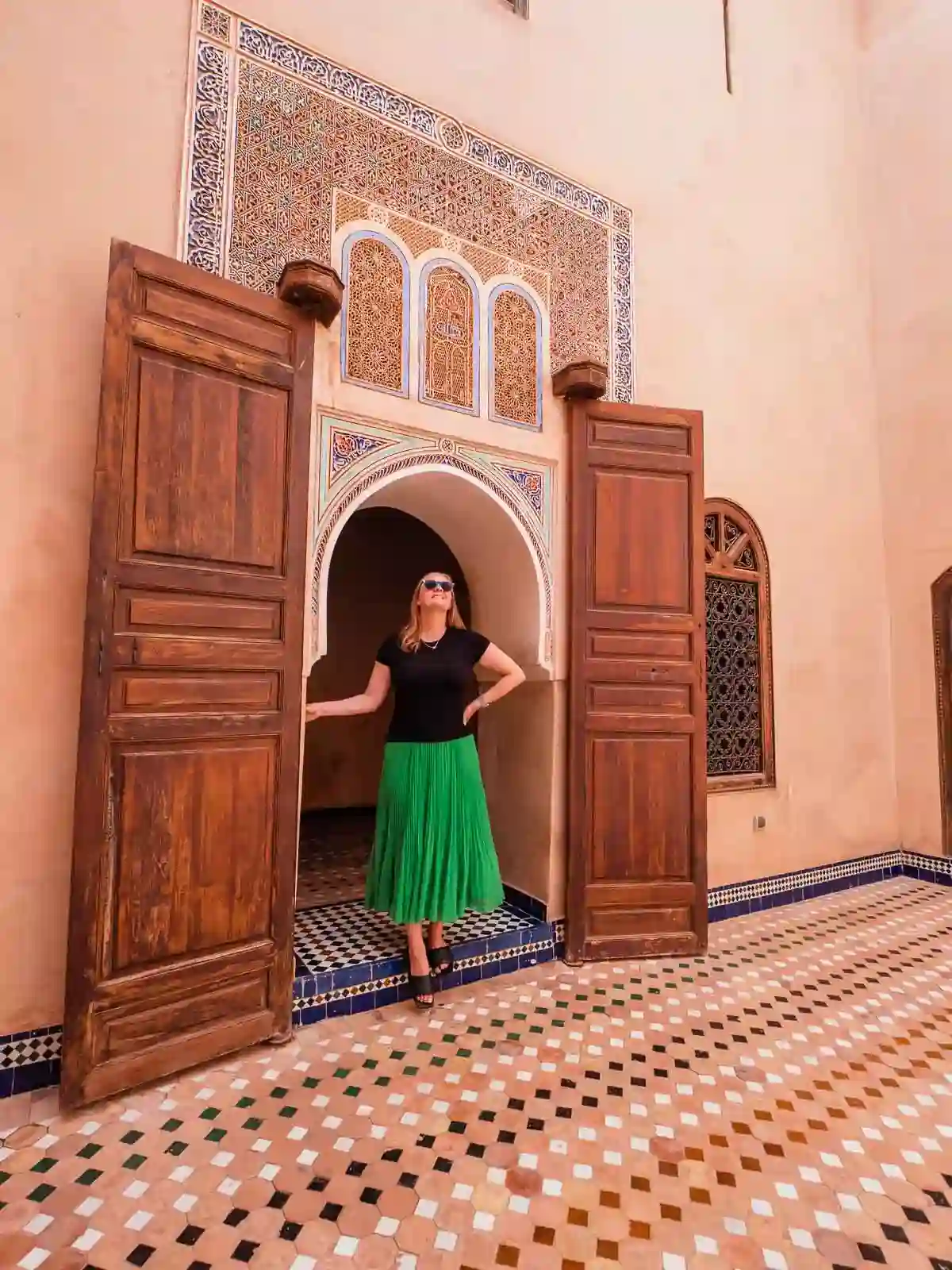
Morocco is a Muslim-majority country where modest clothing is part of social respect. You do not need to wear traditional Moroccan clothes or cover your head, but covering your shoulders, chest, and knees in public is polite and practical.
Tourists who dress modestly usually find locals more open and welcoming. Revealing clothes can attract unwanted attention, especially in crowded areas like Jemaa el-Fna Square or the old souks. Inside hotels, riads, or private pools, you can relax in Western clothing or swimwear, but always cover up when stepping outside.
What Women Should Wear In Marrakech
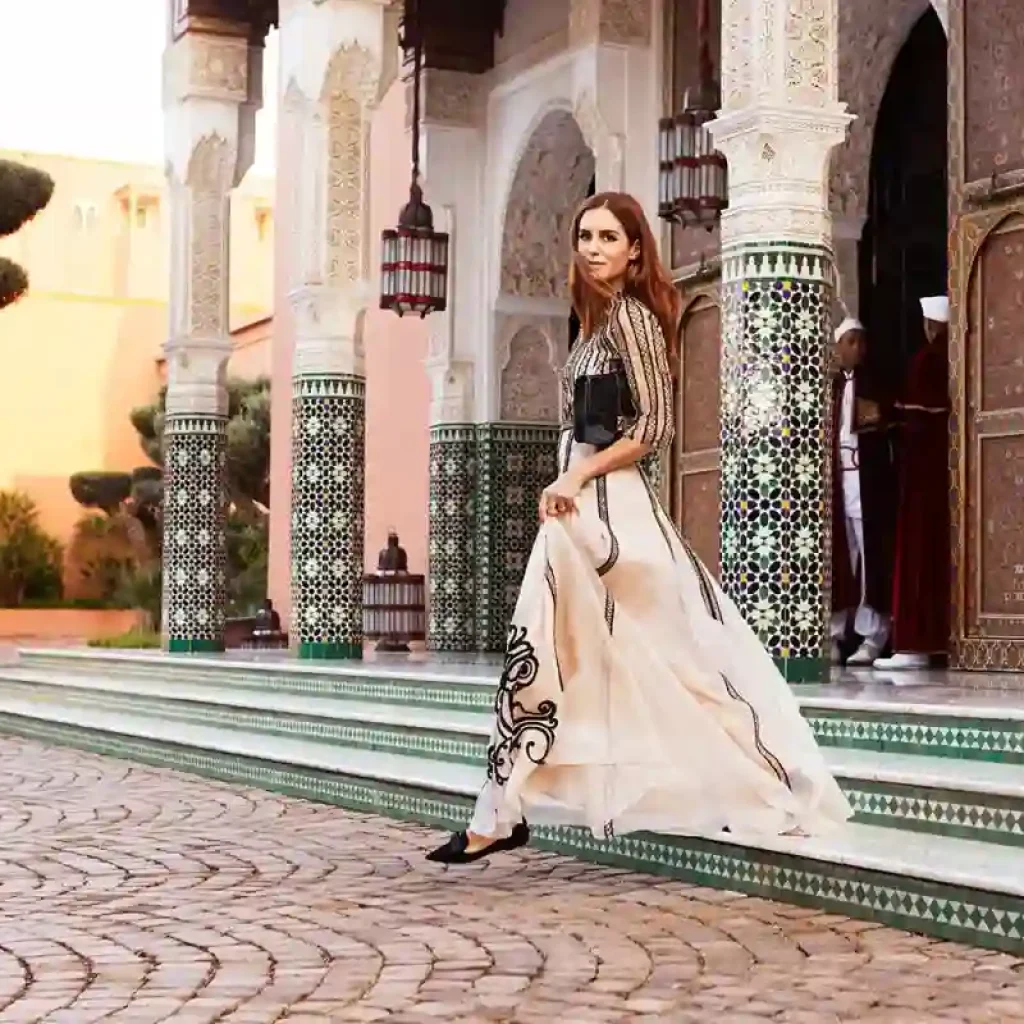
Tops And Upper Body
Loose blouses, cotton shirts, and tunics with sleeves to the elbow or longer are perfect. Avoid sheer fabrics, spaghetti straps, or low-cut tops. Sleeveless shirts can work if paired with a light cardigan or scarf for coverage. Kaftans and linen tunics are widely available in local shops and ideal for the heat.
Bottoms: Pants, Skirts, And Dresses
Short shorts and mini skirts are not appropriate for public areas. Choose wide-leg linen trousers, culottes, or maxi skirts that cover your knees. Flowy maxi dresses are a favorite among travelers because they keep you cool while meeting modesty norms. Jeans are fine in cooler months but too heavy for summer days.
Scarves And Shawls
A scarf is one of the most versatile items you can pack. Use it for shoulder coverage, protection from sun and dust, or warmth at night. Many travelers buy colorful scarves in the souks, made from cotton or silk blends. Although head coverings are not required for tourists, you may use a scarf to enter religious sites where requested.
Footwear
The medina’s narrow streets are uneven and dusty. High heels and thin flip-flops are impractical. Bring comfortable walking shoes or sturdy sandals with ankle straps. Closed-toe shoes are best for long walks. Keep a light pair of slides for your riad or pool areas.
What Men Should Wear In Marrakech
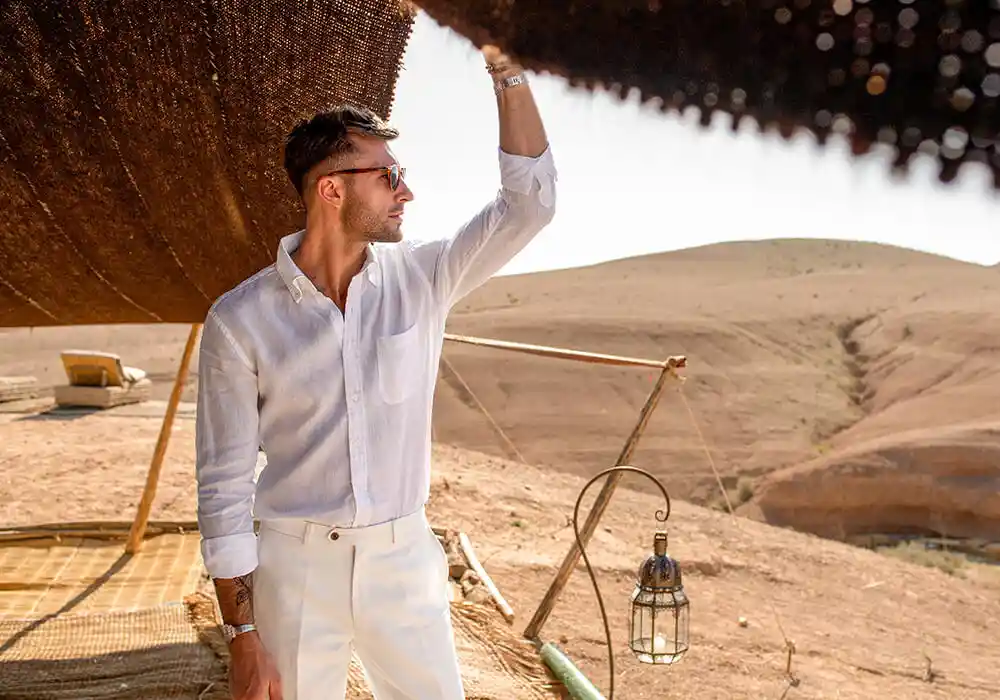
Shirts And Upper Body
T-shirts, short-sleeve shirts, and polos are fine. Avoid sleeveless tops outside hotels. For evenings, bring a linen or cotton long-sleeve shirt—it looks neat and protects against mosquitoes.
Pants And Shorts
Men can wear knee-length shorts in tourist areas, but long lightweight trousers are more respectful and provide better sun protection. Cotton chinos or linen pants are ideal for the heat. Athletic shorts should be kept for the pool or gym.
Shoes
Sneakers or closed shoes work best for exploring the city. Marrakech’s medina has cobblestones, steps, and crowded alleys. Sandals are fine for casual outings but not for full-day walking tours.
Seasonal Packing Guide
Spring (March–May)
Mild to warm days with average highs of 25–30 °C (77–86 °F). Light layers are perfect. Bring a jacket for cooler evenings.
Summer (June–August)
Very hot with daytime temperatures above 40 °C (104 °F). Choose loose linen, light cotton, and sandals. Hats, sunglasses, and SPF 30+ sunscreen are non-negotiable. Stay hydrated and avoid walking at midday.
Autumn (September–November)
Still hot early in the season, cooling down to 28 °C (82 °F) by November. Ideal for long sleeves and comfortable trousers.
Winter (December–February)
Mild during the day, cold after dark. Pack a sweater or light fleece, and long trousers. Mornings can feel chilly, especially if you plan early excursions.
What To Avoid Wearing
Travel experts and locals agree on several “don’ts” for Marrakech:
- Short shorts or mini skirts.
- Sheer or transparent clothing.
- Tight or body-hugging tops.
- Low-cut blouses or backless dresses.
- Clothing with offensive slogans or graphics.
- Beachwear or crop tops outside pool areas.
Avoid wearing flashy jewelry or expensive watches in crowded souks. Petty theft is uncommon but possible in tourist zones. A discreet, zipped bag is safer.
Fabric Guide For Hot And Dry Weather
- Cotton: Light, breathable, and easy to wash.
- Linen: Coolest option for hot days; wrinkles naturally but dries fast.
- Rayon or Viscose: Soft and flowy, good for evening outfits.
- Avoid Polyester or Nylon: They trap heat and cause discomfort.
If visiting in winter, pack one light wool or merino sweater for early mornings and nights.
Clothing For Specific Activities
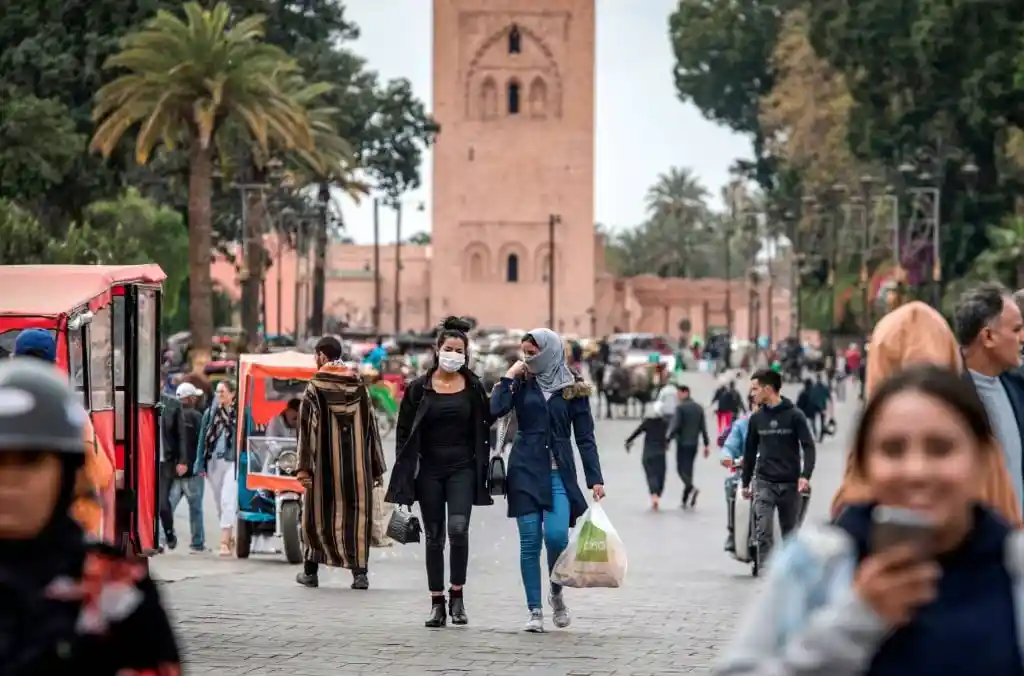
When visiting popular spots from your top 10 Marrakech list, like Jardin Majorelle, Bahia Palace, or Jemaa el-Fna, wear lightweight, modest clothes that keep you comfortable in the heat.
Exploring The Medina
The old city’s streets are narrow and crowded. Dress modestly and wear sturdy shoes. Bring a cross-body bag that zips closed. A hat and sunglasses protect from intense afternoon sun.
Visiting Mosques And Palaces
Non-Muslims can only enter a few mosques, but modest dress is required at all religious or historical sites. Shoulders and knees must be covered. Women may use a scarf to cover their heads if requested by staff.
Desert Excursions
If visiting the Agafay Desert or taking a camel ride, wear long sleeves and full-length pants to block the sun and sand. Bring sunglasses, sunscreen, and a hat. Nights are much cooler, so a fleece or jacket is necessary.
Rooftop Dining
Rooftop restaurants are popular in Marrakech. Evenings can be breezy, so bring a light shawl, cardigan, or denim jacket. Locals often dress neatly at dinner, so smart-casual outfits are ideal.
Practical Accessories For Everyday Use
- Sun Hat: Wide-brimmed or bucket style for better shade.
- Sunglasses: UV-blocking lenses are essential; avoid metal frames that heat up.
- Sunscreen: SPF 30 or higher for daily use.
- Reusable Water Bottle: Tap water is not drinkable. Fill from bottled or filtered sources.
- Cross-Body Bag: Safer than a backpack in crowds.
- Plug Adapter: Morocco uses type C and E sockets, the same as Europe.
- Light Scarf or Shawl: For both sun protection and modesty.
Where To Buy Clothing Locally
If you forget an item, you can easily find suitable clothes in Marrakech.
- Souks in the Medina: Offer handmade scarves, kaftans, harem pants, and cotton dresses. Bargaining is expected but polite negotiation is appreciated.
- Gueliz District: Modern shopping area with fixed prices and international stores like Zara and local brands such as Marwa.
- Ensemble Artisanal: Government-run complex selling quality crafts at set prices.
Buying local garments not only supports artisans but also helps you blend in with comfortable, climate-friendly attire.
Packing Checklist For A Week In Marrakech
- 3–4 breathable tops or shirts
- 2 pairs of long pants or maxi skirts
- 1 long-sleeve shirt or tunic
- 1 light jacket or sweater
- 1 pair of walking shoes
- 1 pair of sandals
- 2 scarves or shawls
- 1 sun hat and sunglasses
- 1 set of swimwear (for hotel use)
- Undergarments and sleepwear
- Small day bag
- Sunscreen and reusable bottle
Laundry services are common in riads and hotels, so you can rewear essentials on longer trips.
Respecting Moroccan Culture Through Dress
Dressing modestly in Marrakech is not about restriction—it’s about cultural awareness. Locals appreciate visitors who take time to understand their traditions. Even though the city welcomes millions of tourists every year, conservative dressing still matters in older neighborhoods, mosques, and family-run shops.
During Ramadan, the month of fasting, modest clothing becomes even more valued. Avoid eating, drinking, or smoking in public during daylight hours. Cover shoulders and knees when walking around the city.
Showing this small level of respect goes a long way. Travelers who dress thoughtfully often find warmer hospitality and more genuine interactions.
Key Tips Before You Go
- Dress modestly outside hotels or resorts.
- Choose light, breathable fabrics like linen or cotton.
- Avoid sheer, short, or tight clothing.
- Bring a scarf for flexible coverage.
- Wear sturdy walking shoes for the medina.
- Use sunscreen and stay hydrated.
- Keep a layer for cooler evenings.
- Carry a plug adapter (types C and E).
- Buy local scarves or kaftans for comfort and respect.
- Always check local weather before packing.
Final Advice
Packing for Marrakech is about balancing comfort, modesty, and practicality. Light layers and breathable fabrics help you stay cool in the heat, while a respectful dress sense helps you fit in with local customs.
Whether you’re exploring the medina, dining under lanterns, or heading into the desert, dressing right ensures a smoother, more enjoyable experience in the Red City.
Frequently Asked Questions
1. Do Tourists Need To Dress Modestly In Marrakech?
Yes. Marrakech is a conservative Muslim city, and modest dress is appreciated. Both men and women should cover their shoulders, chest, and knees in public. Dressing respectfully helps avoid unwanted attention and shows cultural awareness.
2. Do Women Need To Cover Their Hair In Marrakech?
No. Female tourists are not required to cover their hair. Some women choose to wear a scarf when visiting religious or rural areas, but it is entirely optional.
3. What Fabrics Are Best For The Marrakech Climate?
Lightweight, breathable fabrics like cotton and linen are ideal. They help your skin stay cool in the heat. Avoid polyester or nylon, as they trap sweat and increase discomfort.
4. What Should I Avoid Wearing In Marrakech?
Avoid short shorts, mini skirts, sheer or tight clothing, and tops with low necklines. Skip clothing with offensive graphics or slogans. Beachwear should only be worn at pools or private resorts.
5. Can Men Wear Shorts In Marrakech?
Yes, but longer knee-length shorts are recommended. In traditional areas or when visiting mosques, men should wear lightweight trousers instead.
6. What Should I Wear In The Desert Near Marrakech?
Wear long-sleeve tops and full-length pants to protect against the sun and sand. Bring a hat, sunglasses, sunscreen, and a light jacket for cooler desert nights.
7. Is It Cold At Night In Marrakech?
Yes, temperatures drop quickly after sunset, even in summer. Pack a light sweater or jacket for evenings and rooftop dinners.
8. What Footwear Is Best For Exploring The Medina?
Comfortable walking shoes or closed sandals are best. The streets are uneven and dusty, so avoid heels or flimsy flip-flops. Sneakers or leather sandals with straps work well.
9. Can I Wear Swimwear In Marrakech?
Only at hotels, riads, or private pools. Swimwear is not appropriate for walking around public areas or streets.
Recent Posts
 How to Visit Victoria Falls the Smoke That Thunders in 5 Days (No-Stress Guide)
How to Visit Victoria Falls the Smoke That Thunders in 5 Days (No-Stress Guide) 20 Surreal Places in Mexico That Feel Too Dreamy to Be Real (2025)
20 Surreal Places in Mexico That Feel Too Dreamy to Be Real (2025) What Makes Santiago Ways the Most Trusted Camino Agency?
What Makes Santiago Ways the Most Trusted Camino Agency? What Makes Orbis Ways the Go-To Choice for Outdoor Travel Enthusiasts?
What Makes Orbis Ways the Go-To Choice for Outdoor Travel Enthusiasts? Holiday Party Planning 101: Why Transportation Should Be at the Top of Your List
Holiday Party Planning 101: Why Transportation Should Be at the Top of Your List


